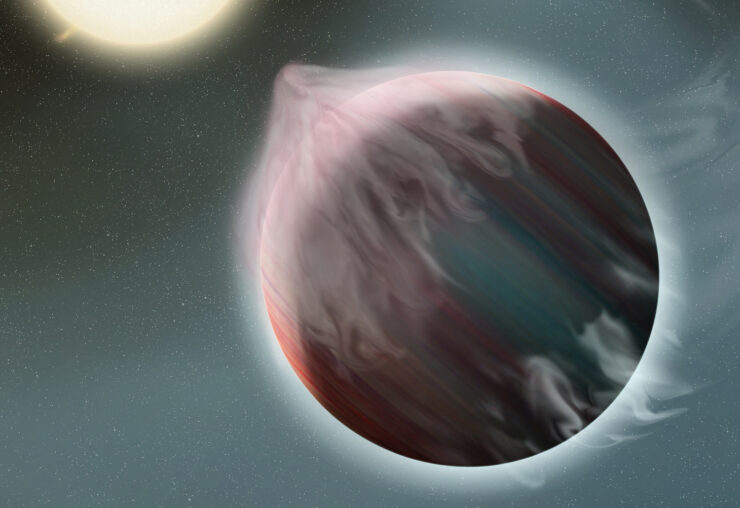I recently read and enjoyed Cody J. Shakespeare and Jason H. Steffen’s effervescent “Day and Night: Habitability of Tidally Locked Planets with Sporadic Rotation.” They explain that potentially habitable planets orbiting red dwarf stars would need to be close enough to their suns that tide locking—explanation here—would be inevitable. Red dwarfs being the most common type of stars, it follows that tide-locked worlds could be the most common variety of potentially habitable worlds. The traditional view is that libration aside, a tide-locked world’s orientation with respect to its sun would be very stable over long periods. Thus the old notion that all the volatiles would inevitably solidify and precipitate onto the forever night side (not actually the case, as even a thin atmosphere can transfer heat surprisingly well).
Shakespeare and Steffen’s model suggests that under certain conditions, tide-locked worlds can “flip,” reorienting themselves so that what was once in night is now in day, and what was formerly illuminated is now in shadow. This would be accompanied by extraordinary climate change. Even more impressively, it would occur over what are short time scales, even by human standards.
While this is terrible news for anyone living on a world orbiting a red dwarf—particularly if they don’t want to adapt their agriculture from Saharan heat to Antarctic cold overnight—this sort of process is a godsend for SF authors. All one needs to do is plant a human community on such a world (perhaps because the humans no longer believe in due diligence, because they were defrauded, or because they had no choice), orchestrate a flip and watch plot ensue. It practically writes itself. Or it will, once news of the paper percolates through the SF community.
While Shakespeare and Steffen’s scenario may be novel, SF writers have not disappointed when it comes to imagining scenarios that radically and rapidly alter a planet’s habitability. Consider these five classic works.
The Year When Stardust Fell by Raymond F. Jones (1958)
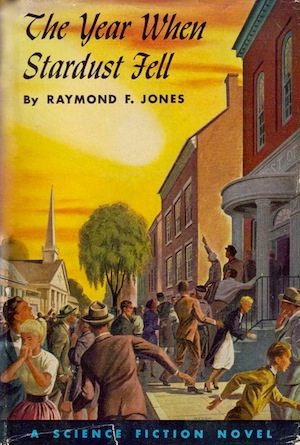
Earth has in recent history passed through cometary comas—several times—with negligible effect. Nevertheless, boy scientist Ken Maddox is inexplicably apprehensive. Rightly so, for the dust filtering down through Earth’s atmosphere is unlike any experienced since the rise of mechanized civilization.
Across Earth, adjacent metal parts fuse. Complex machinery stops functioning. Technological civilization halts. The formerly industrialized world faces famine and worse. Ken and his fellow scientists race to find a solution, but can they succeed before billions die? In a word, no.
This may sound very much like some modern SF works in which technology suddenly halts due to natural or magical phenomena and society collapses. Is it derivative? Note the date of publication: if there is influence, it is from Jones to the modern authors.
“Tindar-B” by Patrick G. Conner (Collected in Stellar #2, 1976)
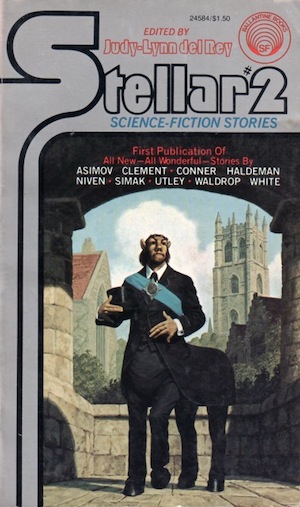
The crew of the Bussard ramjet Plantation are the sort of enthusiastic explorers whose atmospheric test consists of cracking open the airlock to see if the planetary atmosphere kills them. Nevertheless, when there are some available records re: the obscure world of a G9-V star, Plantation’s crew does consult them. Alas, the three-hundred-year-old paper copy of a seven-hundred-year-old paper log entry is terse, smeared, and alarming:
“… from orbit. Ghastly. No survivors.”
The prudent course of action would be to take off before discovering firsthand what local peculiarity slaughtered the first explorers. As one might expect from the atmospheric test, the Plantation’s crew opt for the considerably bolder option of waiting to see what happens.
Yes, this story basically features that Galaxy Quest scene played completely straight. I assume starships are very cheap and crews abundant and expendable. Otherwise only cautious sorts would be chosen for the crew.
Hestia by C. J. Cherryh (1979)

Nattering nabobs of negativity warned Hestia’s human colonists that the valley selected was unsuitable for settlement. The settlers disregarded the advice. Disaster after disaster ensued, with the result that the tiny community is inexorably spiraling towards extinction.
The settlers are convinced a dam would solve all their problems. Sam Merrit, hired to construct said dam, is certain the colonists are deluding themselves. The settlers take steps to ensure Sam has no choice but to try. Unbeknownst to Sam or his employers: Hestia has natives whose territory will be flooded if the dam is built. The colonists’ foolish determination may well trigger interspecies war.
While the above may make it sound like the novel is short on sympathetic, sensible characters, that’s not true. Sam is reasonable enough and so is Sazhje, the alien Sam befriends. Unfortunately, policy decisions are made by self-deluded fools. There are no sequels to this novel that I know of, or we’d know if self-deluded fools were a self-solving problem.
Rocheworld by Robert Forward (1990)
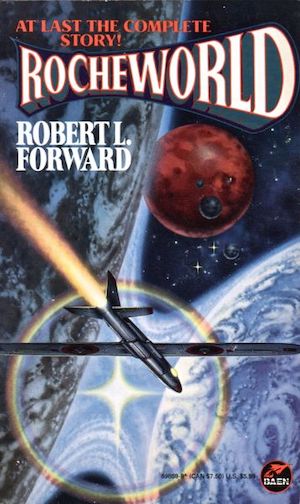
Human explorers reach the Barnard’s Star system and discover a double planet in that star’s miniscule habitable zone. Eau is dominated by a water-ammonia ocean. Roche is an arid world. The close-orbiting pair is unlike anything in the Solar System.
Under the correct circumstances, a sea’s worth of water can transfer from Eau to Roche. While the implications of Eau and Roche’s proximity are lost on the explorers, Eau’s native species, the Flouwen, are intelligent, friendly, and eager to warn the humans about the impending natural disaster into which the explorers are sailing. But will the warning come in time to save the humans?
In most of Forward’s novels, prose and characterization rarely distract from the elegance of whatever scientific or technological wonder he wanted to showcase. In this case (or at least case of the edition I read), he glanced at more character-driven matters; there is a passage towards the end of the book discussing why people might willingly embark on a one-way trip to another star system—a discussion that I still remember, decades later.
Lear’s Daughters by Marjorie B. Kellogg and William B. Rossow (2009)
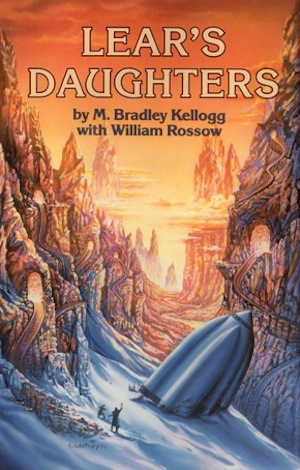
Inexpensive faster-than-light travel has enabled humanity to strip-mine whole planets to feed the economy’s insatiable hunger. Next on the menu: the planet Fiix, some six hundred light-years from Earth. A routine exploratory mission is dispatched, no doubt to be followed in due course by an armada of mining machines.
Fiix is traversing the Coal Sack. Presumably this is why the planet is plagued with unpredictable weather and climate. The handful of native Sawl attribute the calamities to two warring goddesses, but surely this is but the irrational folklore of a people barely clinging to life on a hostile world. Or perhaps the Terrans have completely misunderstood Fiix’s situation and are about to undergo a memorable learning experience.
A detail that jumped out at me is that although Earth is chewing through planets at an impressive rate, most people on Earth seem to be abjectly poor. This suggests that Earth has a high Gini Coefficient (the measure of the efficiency with which wealth is redirected from the undeserving many to the deserving few), probably even higher than any modern nation’s. Who says there can’t be progress?
***
Endangering characters with heretofore overlooked or underappreciated natural phenomena is an abundantly plot-friendly concept. Examples abound, of which the five above are but a very small sample. I didn’t even touch on supernova, interstellar dust clouds, or abrupt ocean decarbonization! Feel free to mention other such works in the comment section.
In the words of fanfiction author Musty181, four-time Hugo finalist, prolific book reviewer, and perennial Darwin Award nominee James Davis Nicoll “looks like a default mii with glasses.” His work has appeared in Interzone, Publishers Weekly and Romantic Times as well as on his own websites, James Nicoll Reviews (where he is assisted by editor Karen Lofstrom and web person Adrienne L. Travis) and the 2021, 2022, and 2023 Aurora Award finalist Young People Read Old SFF (where he is assisted by web person Adrienne L. Travis). His Patreon can be found here.










